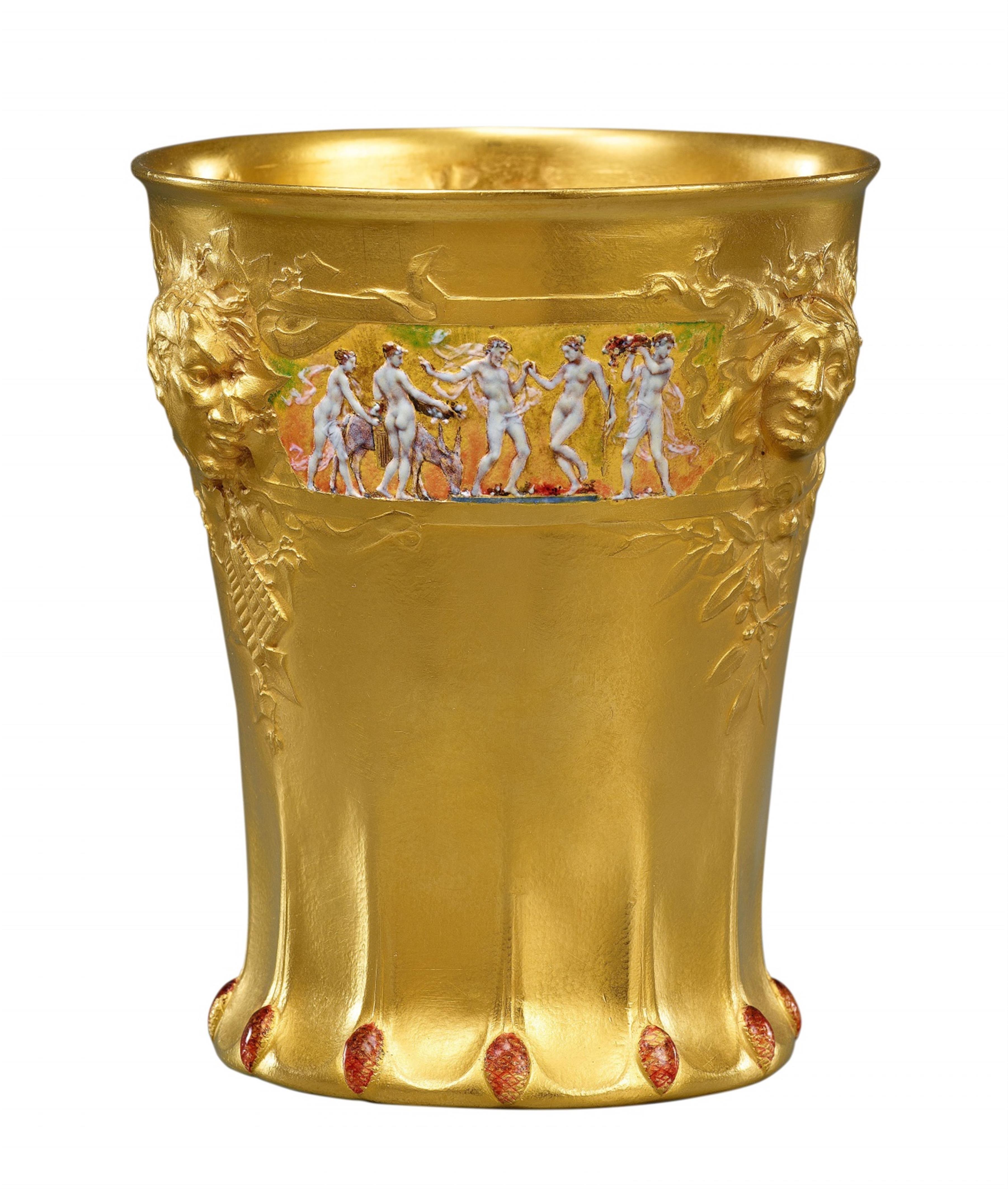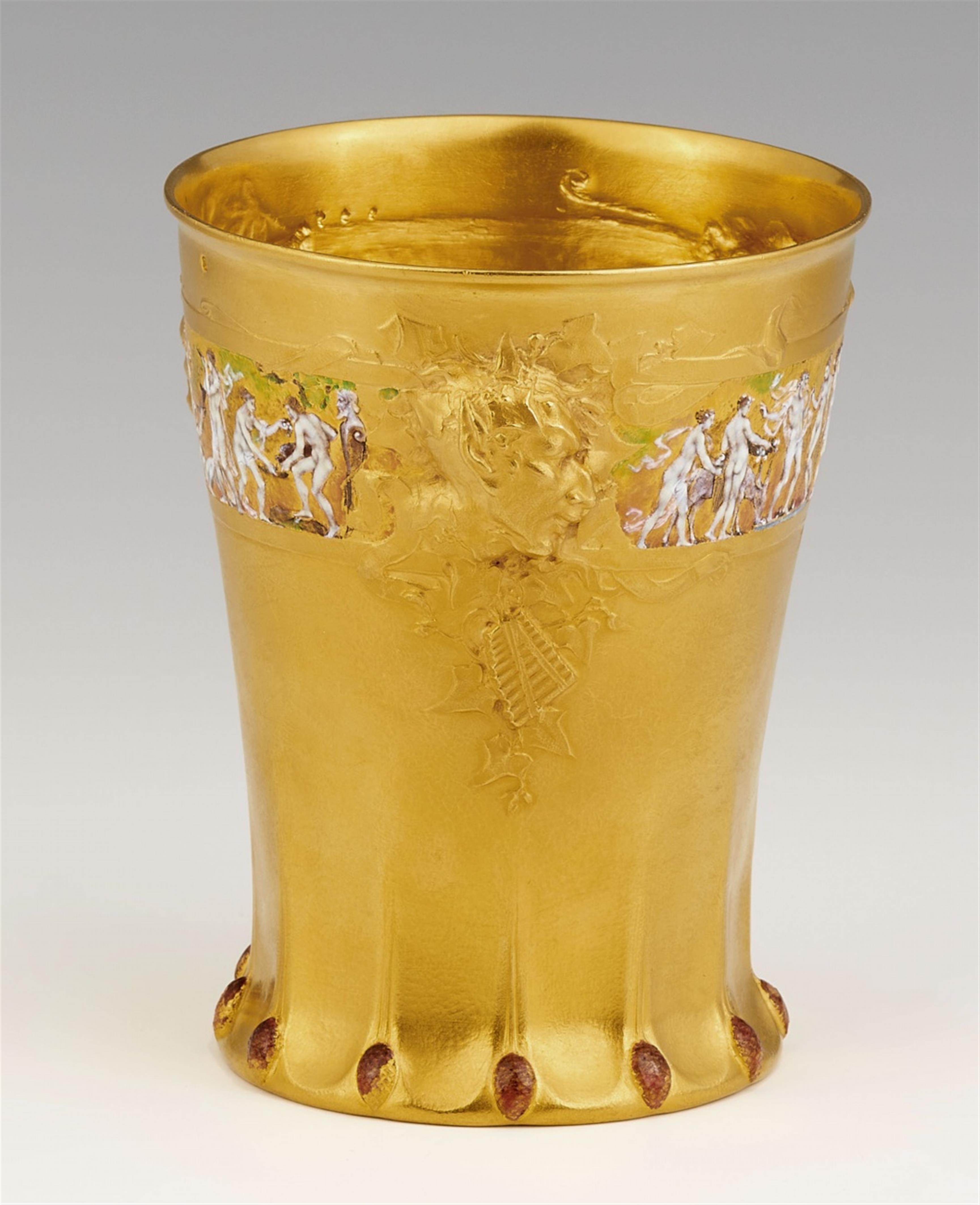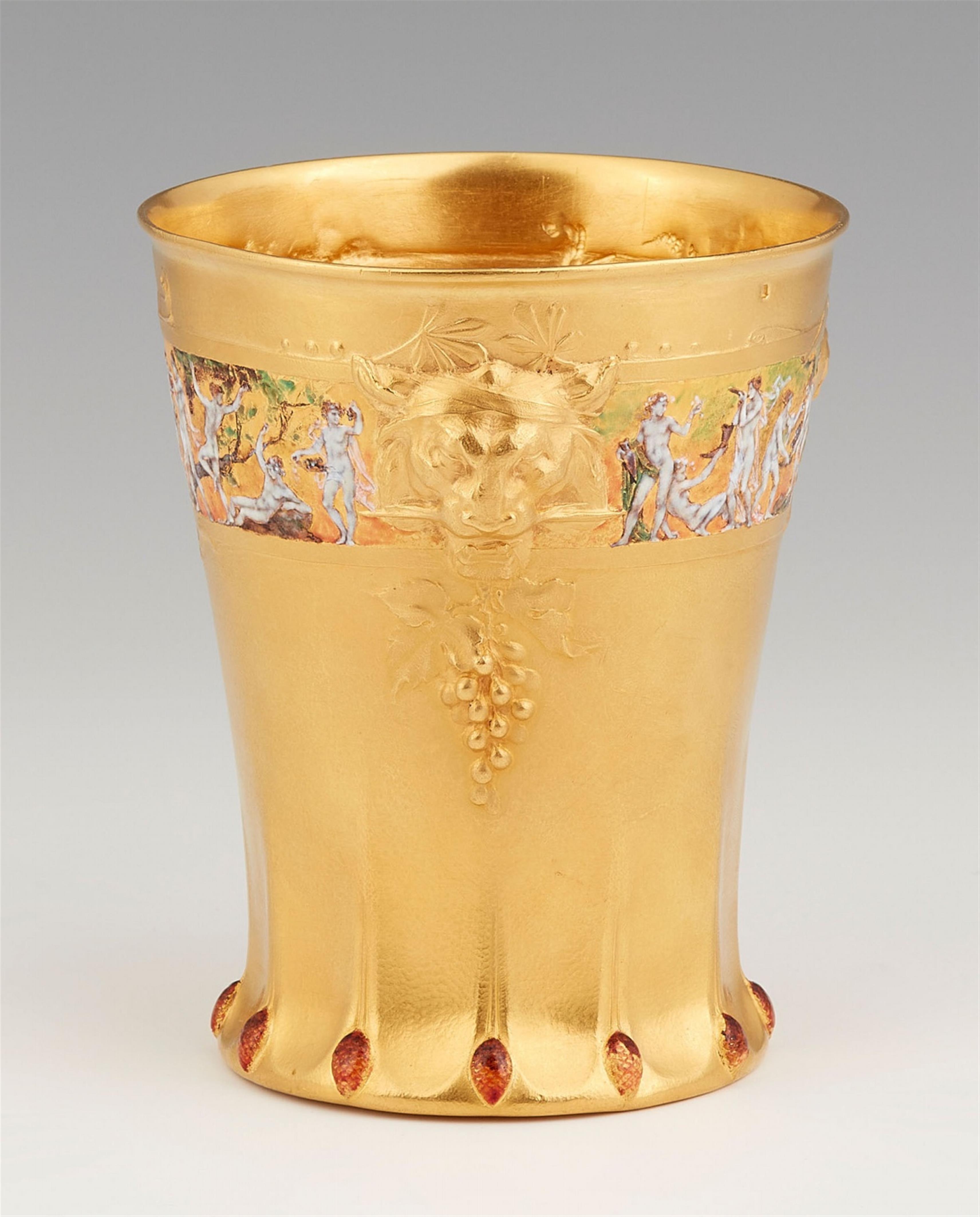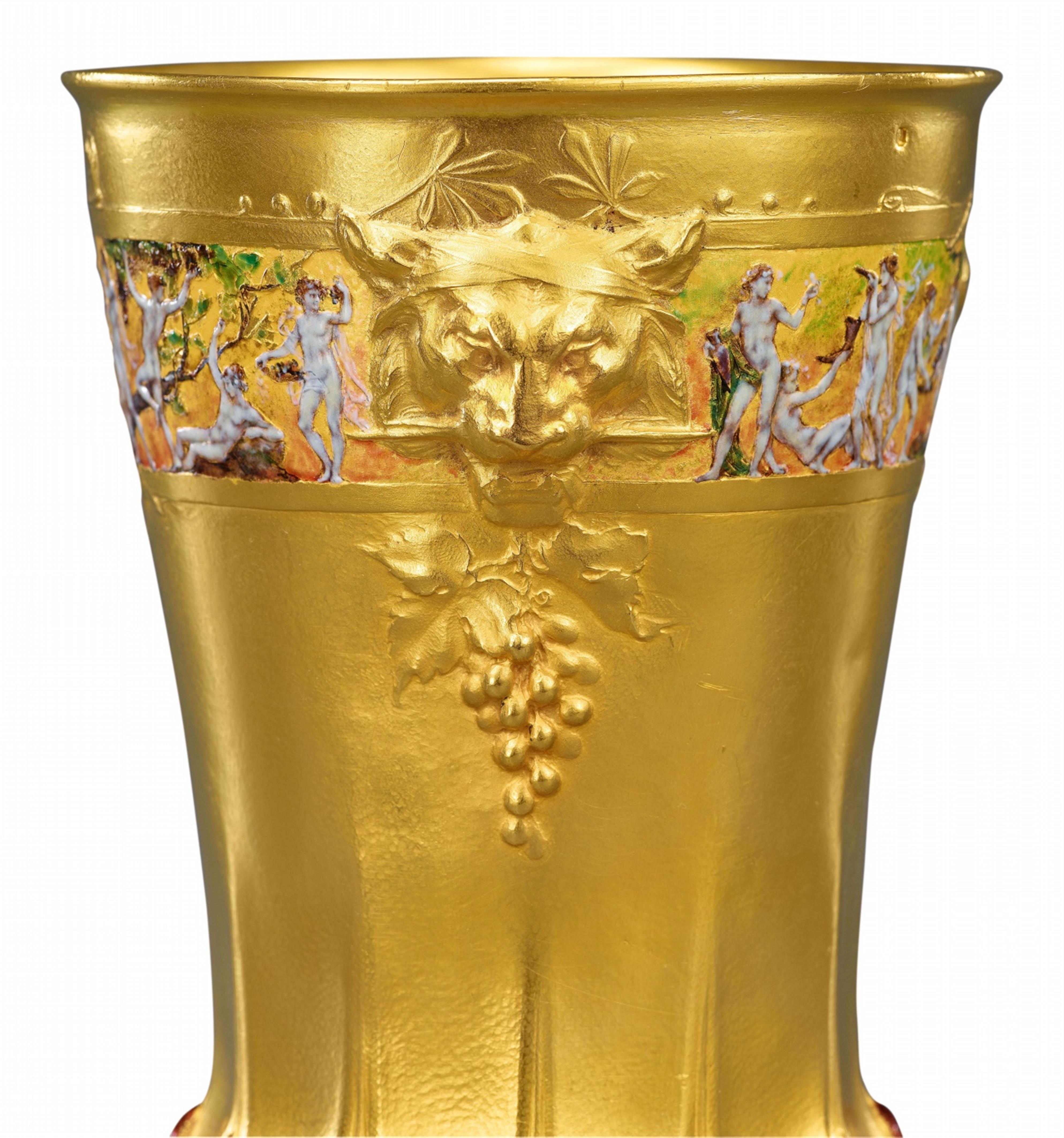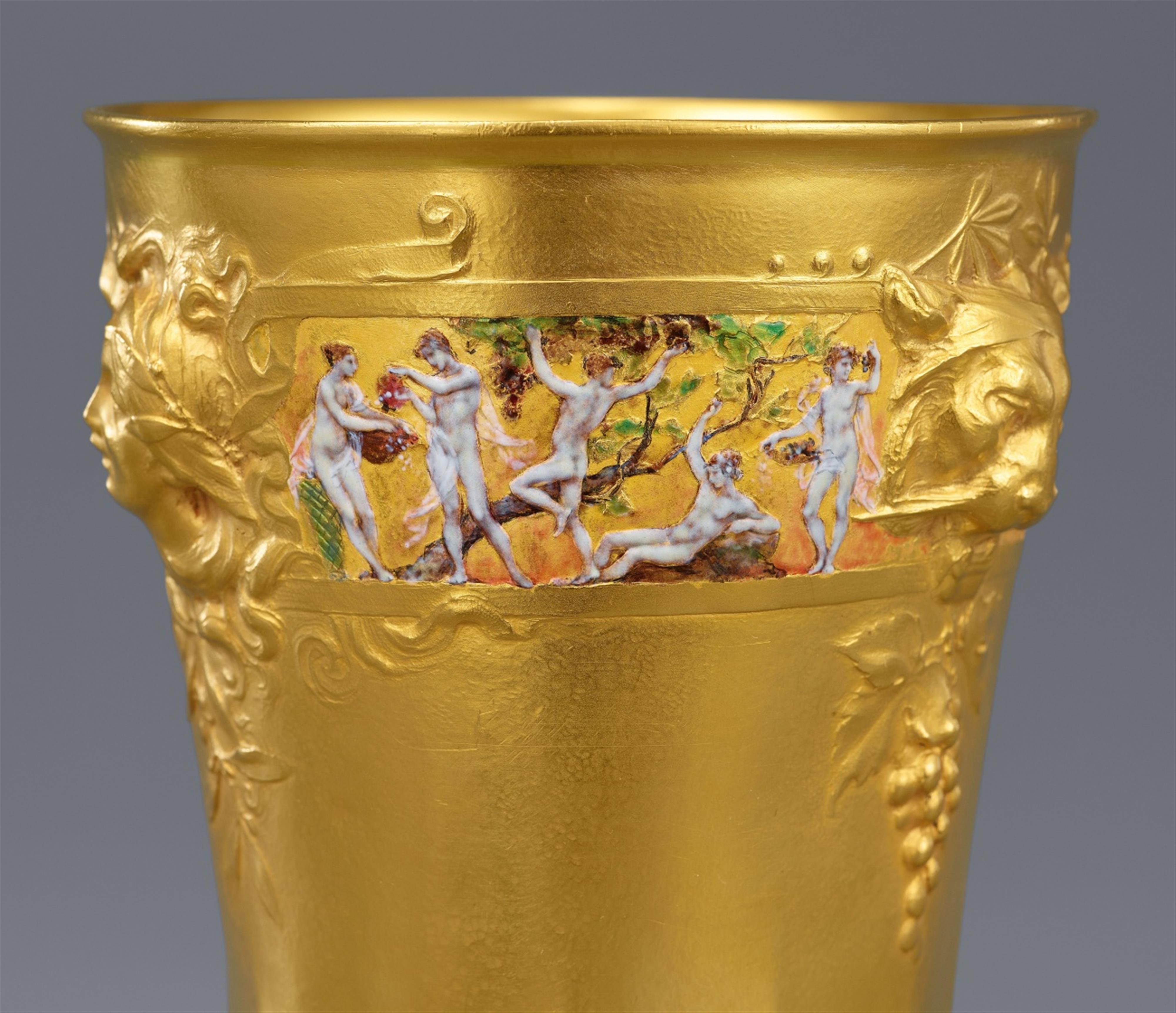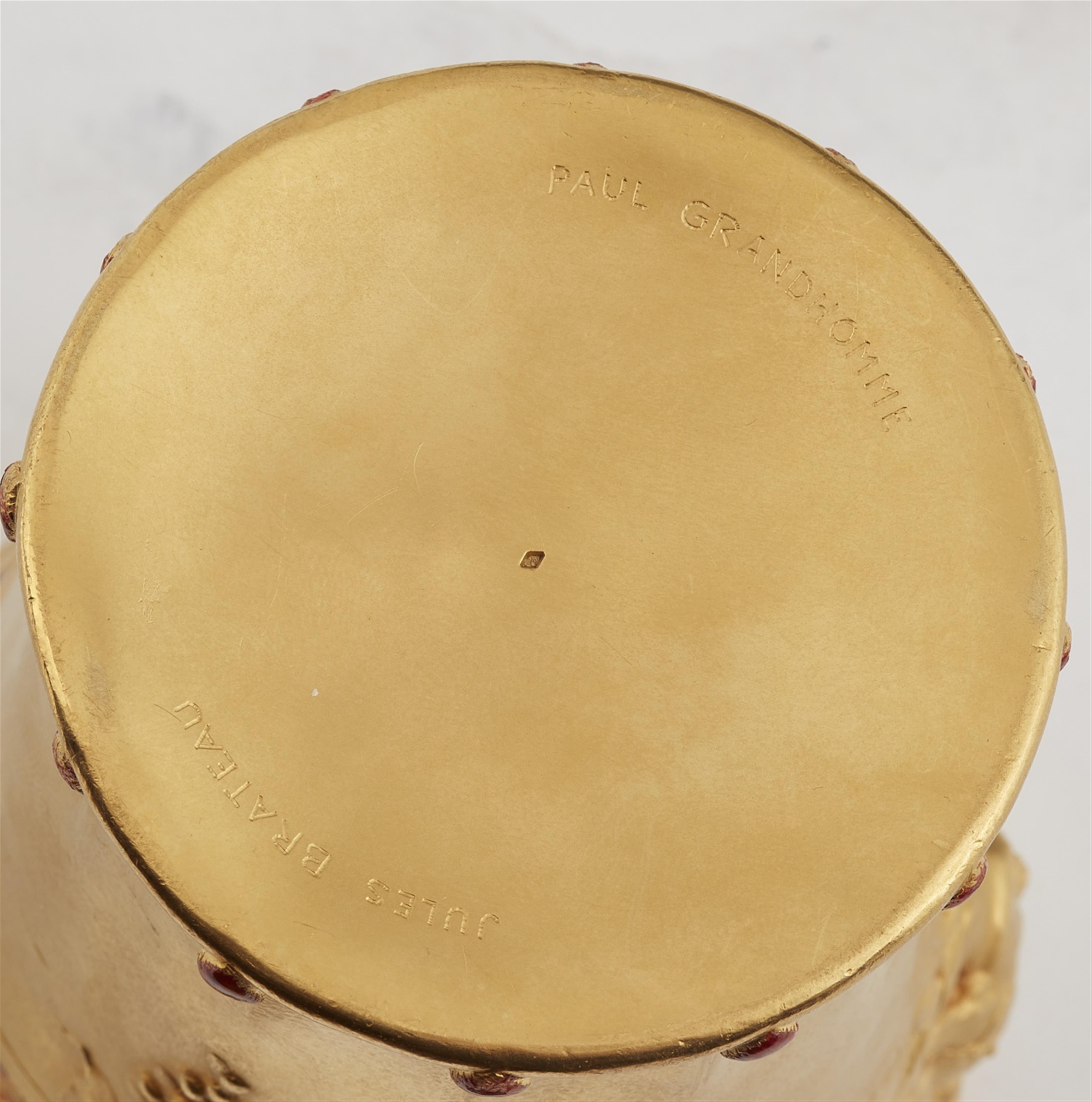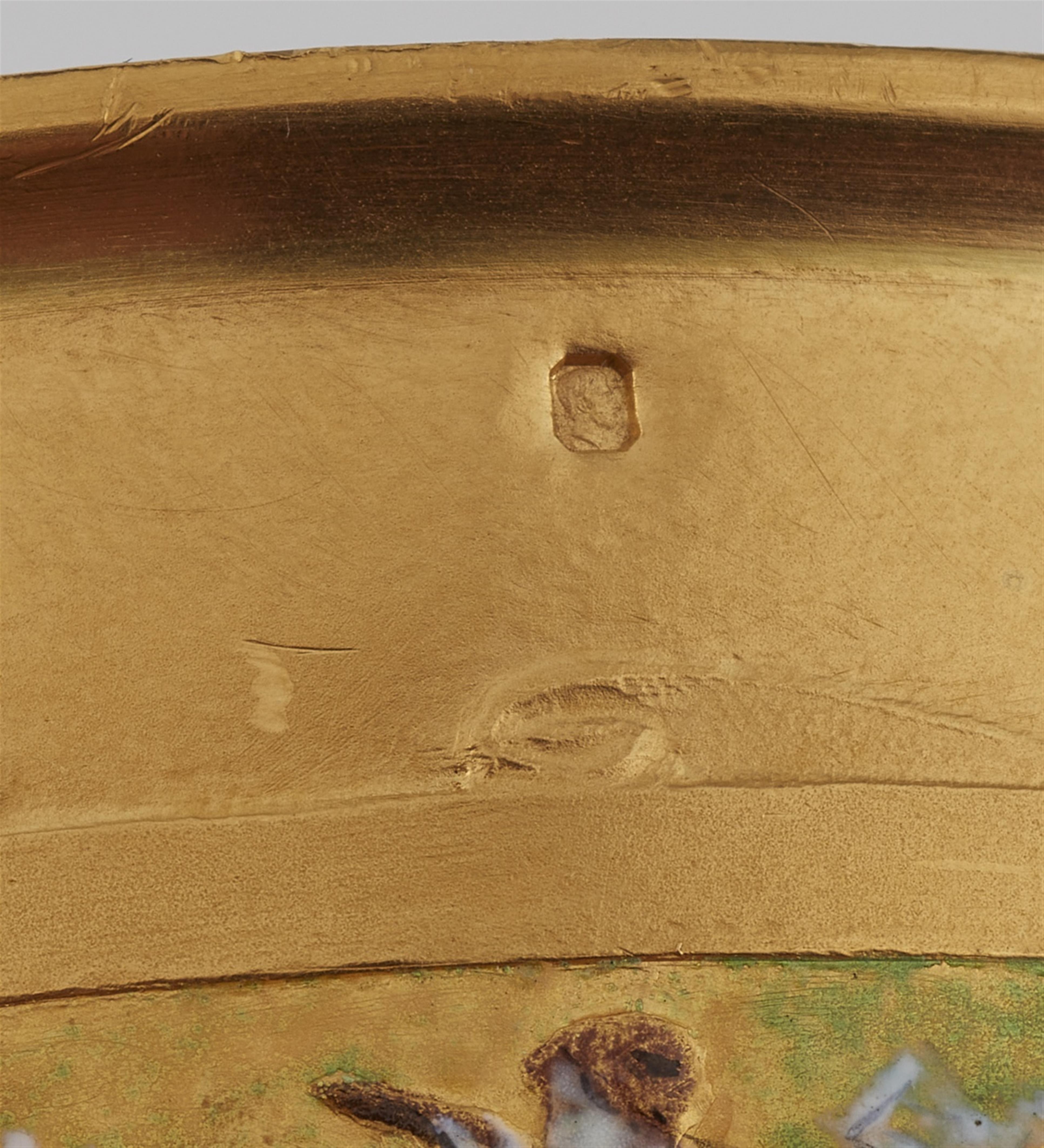A museum quality gold beaker “Les Vendanges”
22k gold, polychrome enamel paint. The tapering, slightly flared lower section separated into twelve fluted bands. The base of each fluted moulding applied with a naturalistically rendered pine cone relief picked out in enamels (slightly chipped). With three large relief mascarons below the lip: One head of a faun in profile facing right with a xylophone and ivy tendrils, one female head (maenad) with flowing hair and a mistletoe branch, one head of a panther facing forward, surrounded by a banderole, with chestnut foliage above and grapevines below with a bunch of grapes. The mascarons connected by a broad banderole, with three figural friezes in the spaces between depicting bacchanalian scenes picked out finely in enamels. Engraved on the underside “JULES BRATEAU” and “PAUL GRANDHOMME”. H 11.3, D 9.3 cm, weight 404 g.
Paris, marks of the goldsmith Jules-Paul Brateau and the enamellist Paul Grandhomme, 1893.
The goldsmith Jules Brateau (1844 - 1923) and the enameller Paul-Victor Grandhomme (1851 - 1944) designed this cup for the World's Columbian Exposition in Chicago in 1893. The World's Columbian Exposition took place from 1st May to 30th October and had as its theme the 400th anniversary of the discovery of America by Christopher Columbus. France was also represented, among other things, by Auguste Rodin's famous sculpture "The Kiss" (Le Baiser) - a work which, due to its intimate nature, could only be viewed by men and behind a curtain.
This magnificent Art Nouveau cup, made of pure gold, equally attracted public attention. The two designers and craftsmen, Brateau and Grandhomme, created some extremely precious objects as joint commissions. The Musée des Arts Décoratifs, for example, owns a fantastic small ivory box (inv. no. 17461), decorated with gold appliqués and coloured enamel panels, made for Georges Berger, who was president of the Union Centrale des Arts Décoratifs from 1891 to 1910. For the Salon de la Société nationale des beaux-arts in Paris in 1897, he was able to part with the beautiful piece again for a short time, until it was then bequeathed to the Paris Museum in 1910.
The Musée des Arts Décoratifs owns another particularly emotional object by the goldsmith Jules Brateau, namely the important ring "Le Calvaire" made of gold, copper and a ruby cut in the shape of a heart (inv. no. 2002.173.6). Brateau dedicated it to the memory of his twenty-year-old son, who was one of the first casualties on the battlefield of World War I on August 22nd 1914. The ring was so important to him that he suggested to Cardinal Amette that he wear it at the dedication of the Sacré-Cœur Basilica, but the latter did not.
Jules Brateau also worked in pewter, and was celebrated by his contemporaries as the master who had given new impetus to this craft in France. At the 1889 Paris World's Fair, the important "Les Arts" jug and its accompanying basin won a gold medal (now MAD, inv. no. 5829a,b). The French Renaissance inspired him to create the model. The body of the jug depicts Pallas Athena surrounded by personifications of Poetry and Science and under the spout, Inspiration holds an urn from which gushes the eternal source of beauty, whilst the figure on the handle represents Truth. In the centre of the tray, Glory incarnate holds a palm branch and a trumpet. Four female figures symbolize the main arts: painting, sculpture, architecture and music.
The Paris museums also possess some sensational enamel works by Paul-Victor Grandhomme. In the MAD are a bracelet, brooch and watch chain in the Renaissance style created from 1878 - 1883 (inv. no. 14851), based on a design by Alphonse Fouquet and sculptural elements by Albert-Ernest Carrier-Belleuse. The Musée d'Orsay houses some of his enamel paintings based on motifs by Gustave Moreau.
Provenance
Auctioned at Christie's Geneva on 14 May 1980, lot 567.
Auctioned at Christie's New York on 15 October 2008, lot 144.
Literature
Illustrated in Boucaud, Jules Brateau 1844 - 1923, 2003, p. 164. Cf. also Revue des Arts Décoratifs, Januar 1899, p. 329.<BR>Cf. also Vever, La Bijouterie Française au XIXe siècle (1800 - 1900), vol. III, Paris 1908, p. 466 ff. Cf. also Bouilhet, L'Orfèvrerie Française aux XVIIIe et XIXe siècles, 1700-1900, Paris 1912, vol. 3, p. 371 f., "une coupe d'or et d'émail". Cf. also Duncan, Art Nouveau Designers at the Paris Salons 1895 - 1914, vol. I, 2002, p. 125.

